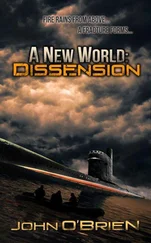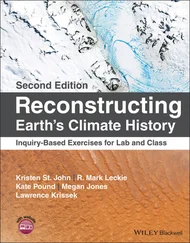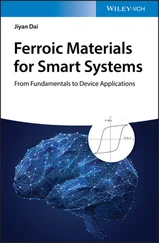John O'Brien - Earth Materials
Здесь есть возможность читать онлайн «John O'Brien - Earth Materials» — ознакомительный отрывок электронной книги совершенно бесплатно, а после прочтения отрывка купить полную версию. В некоторых случаях можно слушать аудио, скачать через торрент в формате fb2 и присутствует краткое содержание. Жанр: unrecognised, на английском языке. Описание произведения, (предисловие) а так же отзывы посетителей доступны на портале библиотеки ЛибКат.
- Название:Earth Materials
- Автор:
- Жанр:
- Год:неизвестен
- ISBN:нет данных
- Рейтинг книги:5 / 5. Голосов: 1
-
Избранное:Добавить в избранное
- Отзывы:
-
Ваша оценка:
- 100
- 1
- 2
- 3
- 4
- 5
Earth Materials: краткое содержание, описание и аннотация
Предлагаем к чтению аннотацию, описание, краткое содержание или предисловие (зависит от того, что написал сам автор книги «Earth Materials»). Если вы не нашли необходимую информацию о книге — напишите в комментариях, мы постараемся отыскать её.
Earth Materials,
Earth Materials,
Earth Materials — читать онлайн ознакомительный отрывок
Ниже представлен текст книги, разбитый по страницам. Система сохранения места последней прочитанной страницы, позволяет с удобством читать онлайн бесплатно книгу «Earth Materials», без необходимости каждый раз заново искать на чём Вы остановились. Поставьте закладку, и сможете в любой момент перейти на страницу, на которой закончили чтение.
Интервал:
Закладка:
The chapters featured in this textbook illuminate key topics in Earth materials including their:
1 Properties, origin, and classification
2 Associations and relationships in the context of Earth’s major tectonic, petrologic, hydrologic, and biogeochemical systems
3 Uses as resources and their fundamental role in our lives and the global economy
4 Relation to natural and human induced hazards
5 Impact on health and the environment.
This textbook provides:
1 Comprehensive descriptive analysis of Earth materials
2 Color graphics and insightful texthe in a logical integrated format
3 Field examples and regional relationships with graphics that illustrate concepts discussed
4 Examples of how concepts discussed can be used to address real world issues
5 Contemporary references from current scientific journals related to developments in Earth materials research
6 Summative discussions of how Earth materials are interrelated with other science and nonscience fields of study.
Chapter 1contains an introduction to Earth materials and an overview that includes a discussion of Earth’s interior and plate tectonics. This introductory chapter provides a global framework for following chapters. Chapters 2– 6constitute the minerals portion of the textbook. Chapter 2addresses mineral chemistry, bonding mechanisms, and classification. Chapter 3explores fundamentals of crystal chemistry, including ionic substitution, phase diagrams, and isotope geochemistry. Chapter 4highlights the principles of crystallography including symmetry operations, crystal lattices, and crystal systems. Chapter 5examines mineral formation, macroscopic mineral properties, and the major groups of rock‐forming minerals. Chapter 6focuses on the microscopic optical properties of minerals and petrographic microscopic techniques.
Chapters 7– 10encompass the igneous portion of the textbook. Chapter 7discusses the composition, textures, and classification of igneous rocks. Chapter 8describes the origin and evolution of magmas and plutonic structures. Chapter 9vividly presents volcanic processes and landforms in all their wonder. Chapter 10explores igneous rock associations and their relations to plate tectonics.
Chapters 11– 15focus on sedimentary rocks and processes. Chapter 11addresses weathering, sediment production, and soils. Chapter 12discusses the sedimentary cycle, the agents, and processes by which sediments are eroded, transported, and deposited and how they imprint sediments deposited in different environments. Chapters 13and 14examine the composition, textures, classification, and origin of detrital sedimentary rocks and biochemical sedimentary rocks that include carbonates, evaporites, siliceous rocks, iron formations, phosphates, and carbon‐rich sedimentary materials that include coal, petroleum, and natural gas.
Chapters 15– 18address metamorphic rocks and processes. Chapter 15introduces metamorphic agents, processes, protoliths, and types of metamorphism. Chapter 16discusses metamorphic structures, stresses, and deformation processes. Chapter 17investigates metamorphic rock textures and classification. Chapter 18concentrates on metamorphic zones, facies, facies series, and metamorphic trajectories in relationship to plate tectonics.
Lastly, Chapter 19explores ores minerals, industrial minerals, and gems as well as environmental and health issues related to Earth materials.
In addition to information presented in this textbook, additional resources, including detailed descriptions of major rock‐forming minerals and keys for identifying minerals using macroscopic and/or optical methods are available on the website that supports this text at:
www.wiley.com/go/hefferan/earthmaterials.
Our overall goal is to produce an innovative, visually appealing, informative, and readable textbook that addresses the full spectrum of Earth materials. We present equal treatment to minerals as well as igneous, sedimentary, and metamorphic rocks and demonstrate their impact on our personal lives and the global environment on this planet. We hope you enjoy this text and use it to further your knowledge of Earth materials.
Acknowledgments
The authors thank all those at John Wiley & Sons who worked with them on the second edition. Special thanks are due Rosie Hayden, Antony Samy, Anandan Bommen, Umar Saleem and Andrew Harrison. Their first edition greatly benefited from guidance provided by Ian Francis, Kelvin Matthews, Jane Andrews, Delia Sandford, Camille Poire, Catherine Flack and, once again, Rosie Hayden. The authors are grateful to Anita O’Brien who provided the index for both editions. We once again thank reviewers for the first edition who greatly improved the textbook, while in no way being responsible for its shortcomings. These individuals include Malcolm Hill, Stephen Nelson, Lucian Platt, Steve Dutch, Duncan Heron, Jeremy Inglis, Maria Luisa Crawford, Barbara Cooper, Alec Winters, David H. Eggler, Cin‐Ty Lee, Samantha Kaplan, Penelope Morton and Ellen D’Andrea.
The authors truly appreciate many individuals and publishers who generously permitted reproduction of their figures and images from published work, educational websites and/or personal collections. The authors are particularly indebted to Doug Moore, Steve Dutch, Stephen Nelson, Kurt Hollacher, Gregory Finn, Patrice Rey, Neil Heywood, the U.S. Geological Survey, the Geological Survey of Canada and the Geological Society of America.
Kevin Hefferan would especially like to thank his wife Sherri and children Kaeli, Patrick, Sierra, Keegan and Quintin and parents Patrick and Catherine for their love, laughter and never wavering enthusiasm. Kevin is also grateful for the support of the Department of Marine Science, Safety and Environmental Protection at Massachusetts Maritime Academy of Buzzards Bay, MA. Kevin expresses his appreciation to all his collaborative colleagues through the years especially Jeff Karson, Tony Rathburn, William Hubbard, Heather Burton, Abderrahmane Soulaimani, Hassan Admou, Ali Saquaque, Nasrrrddine Youbi, Lucian Platt, Neil Heywood, Keith Rice, Doug Moore and Samantha Kaplan. Kevin was an undergraduate student of John O’Brien at New Jersey City University and greatly benefited from his wisdom as well as that of John Marchisin, Howard Parish and Barry Perlmutter.
John O’Brien would like to thank his wife Anita, his sons Tyler and Owen and granddaughter Scarlett for their love and support. John worked for 41 years in the Department of Geoscience‐Geography (now Earth and Environmental Sciences) at New Jersey City State University. He is now retired and living in the San Francisco Bay area. Sabbaticals from the University in 2005 and again in 2011, gave John the time required to complete this project. John wishes to acknowledge his indebtedness to Ansel Gooding, Charles Martin, Wayne Martin, John Pope, Robert Webb, John Crowell, Don Runnels, Joe Clark and Barry Perlmutter for encouraging, supporting and challenging him at critical times in his career.
The authors believe that an understanding of Earth materials is more important than ever in this twenty‐first century in order to appropriately utilize essential resources, for mitigating geohazards and dealing with environmental change. Universities and government agencies would be wise to revitalize the Earth science and geology curricula in the United States and other countries around the world. We must all renew efforts to use our resources wisely and to engage the green economy.
About the Companion Website
This book is accompanied by a companion website.

www.wiley.com/go/hefferan/earthmaterials2 
Интервал:
Закладка:
Похожие книги на «Earth Materials»
Представляем Вашему вниманию похожие книги на «Earth Materials» списком для выбора. Мы отобрали схожую по названию и смыслу литературу в надежде предоставить читателям больше вариантов отыскать новые, интересные, ещё непрочитанные произведения.
Обсуждение, отзывы о книге «Earth Materials» и просто собственные мнения читателей. Оставьте ваши комментарии, напишите, что Вы думаете о произведении, его смысле или главных героях. Укажите что конкретно понравилось, а что нет, и почему Вы так считаете.












